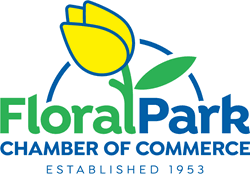The Small Business Playbook for Saving Time and Reducing Errors
Running a small business often means juggling multiple responsibilities with limited time and resources. Finding ways to streamline operations can make the difference between daily firefighting and steady, strategic growth. From optimizing internal workflows to leveraging digital tools, there are several practical steps entrepreneurs can take to boost efficiency without overwhelming their teams.
Streamlining Daily Operations
Efficiency starts with removing friction from everyday processes. For many small businesses, this means:
-
Standardizing routine tasks with written checklists or templates.
-
Moving to cloud-based tools for file sharing and collaboration (see Dropbox Business for an example).
-
Using project management platforms to track deliverables and deadlines.
-
Setting up recurring staff check-ins to spot bottlenecks early.
Even small changes, such as shifting to electronic signatures or switching from paper invoices to online billing, can save hours each month.
Automating Repetitive Workflows
One of the most impactful efficiency gains comes from reducing manual effort. Here are ways AI benefits small businesses through automation: it helps handle invoicing, appointment scheduling, customer service inquiries, and even inventory tracking. By offloading these repetitive tasks, small business owners free up time for more strategic activities like planning, customer engagement, and growth initiatives. The result is fewer errors, faster turnaround, and a smoother day-to-day operation.
Technology That Supports Growth
While automation tools cover routine processes, other platforms help small businesses grow smarter:
-
QuickBooks Online (official site) for accounting and expense management.
-
Trello (Trello overview) for team collaboration and task tracking.
-
HubSpot CRM (HubSpot CRM) for organizing customer data.
-
Slack (Slack for business) for internal communication.
-
SurveyMonkey (SurveyMonkey) to gather customer feedback quickly.
These tools not only reduce administrative overhead but also provide better data visibility, which supports more informed decision-making.
Quick Wins Checklist
Here’s a simple checklist of practical actions small business owners can take:
-
? Audit and document repeatable workflows.
-
? Introduce one automation tool for routine tasks.
-
? Move essential files to a shared cloud system.
-
? Standardize customer communication templates.
-
? Review software subscriptions to cut unused tools.
Efficiency at a Glance
|
Area |
Common Challenge |
Efficiency Boost |
|
Invoicing |
Manual entry takes too long |
Automated billing platforms with reminders |
|
Scheduling |
Double-bookings and no-shows |
Online scheduling apps with calendar sync |
|
Customer Support |
Slow response times |
Helpdesk software or chatbots for FAQs |
|
Inventory |
Overstock or stockouts |
Digital inventory tracking with real-time data |
|
Team Communication |
Long email chains |
Messaging apps that centralize collaboration |
FAQs About Operational Efficiency
What’s the fastest way to start improving efficiency?
Begin by identifying repetitive manual tasks and automating one or two of them. Even small wins add up.
Do efficiency tools cost a lot?
Many platforms, such as Asana’s free tier, offer basic features at no cost. Paid versions are usually tiered to grow with your business.
Can efficiency improvements also help with customer satisfaction?
Yes — faster response times, smoother billing, and more reliable service directly improve customer experience.
Conclusion
Boosting operational efficiency doesn’t require an overhaul. By automating repetitive tasks, leveraging the right tools, and standardizing key workflows, small businesses can save time, reduce errors, and focus more on growth. Each small step compounds into meaningful improvements that strengthen long-term sustainability.
You can quickly discover the vibrant community of Floral Park and empower your business by joining the Floral Park Chamber of Commerce today!

